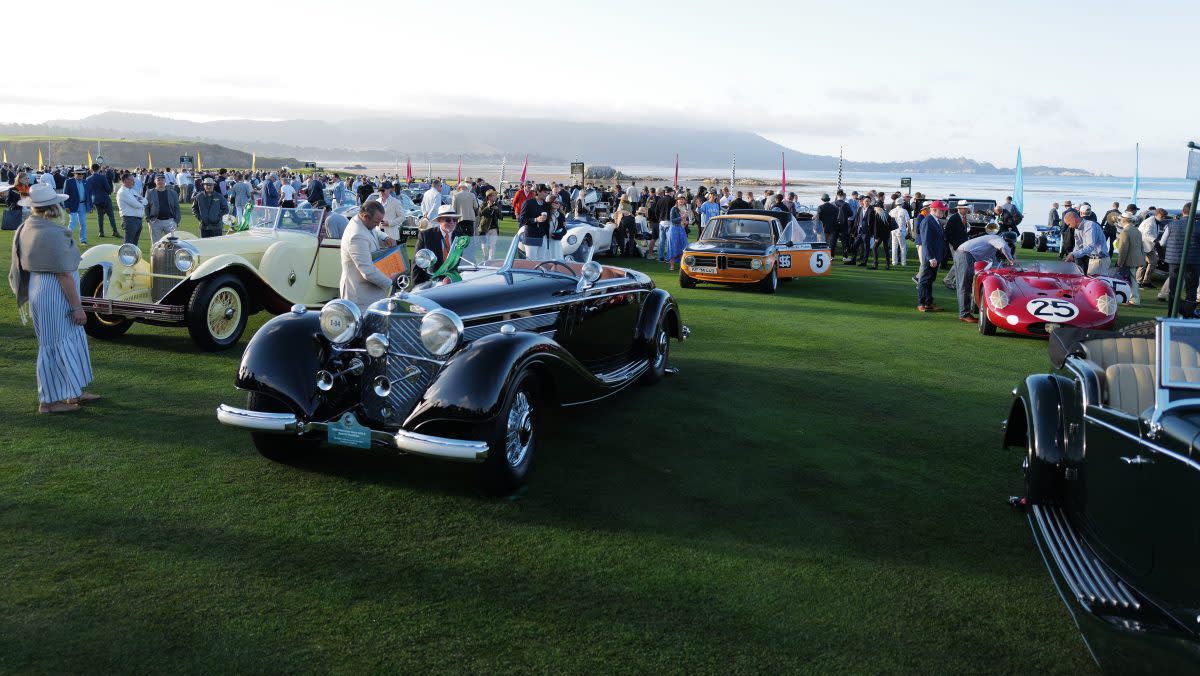
For the 74th time in history, collectors of the world’s finest automobiles and the enthusiasts who appreciate them made their pilgrimage to Northern California’s Monterey Peninsula to take part in the revered Pebble Beach Concours d’Elegance. The annual exhibition and competition, born from the Pebble Beach Road Races—held from 1950 through 1956—has grown to become the automotive world’s definitive litmus test of craftsmanship, authenticity, preservation, and restoration; the prestige of entry alone turbocharging any car’s provenance and subsequent value.
This year’s event commemorated several milestones, such as the centenaries of automaker Chrysler and the Phantom nameplate from Rolls-Royce, as well as the 75th anniversary of Formula 1. The show field comprised 229 contestants, each superlative examples of engineering and coachwork, divided into 28 competitive classes and evaluated by a team of 59 judges. From a prewar Caddy to a grand-prix “Gullwing” to the uniquely beautiful Best of Show, here are the cars we found most captivating.
More from Robb Report
Best of Robb Report
Sign up for RobbReports's Newsletter. For the latest news, follow us on Facebook, Twitter, and Instagram.
Click here to read the full article.
1933 Rolls-Royce Phantom II Brewster Henley Roadster
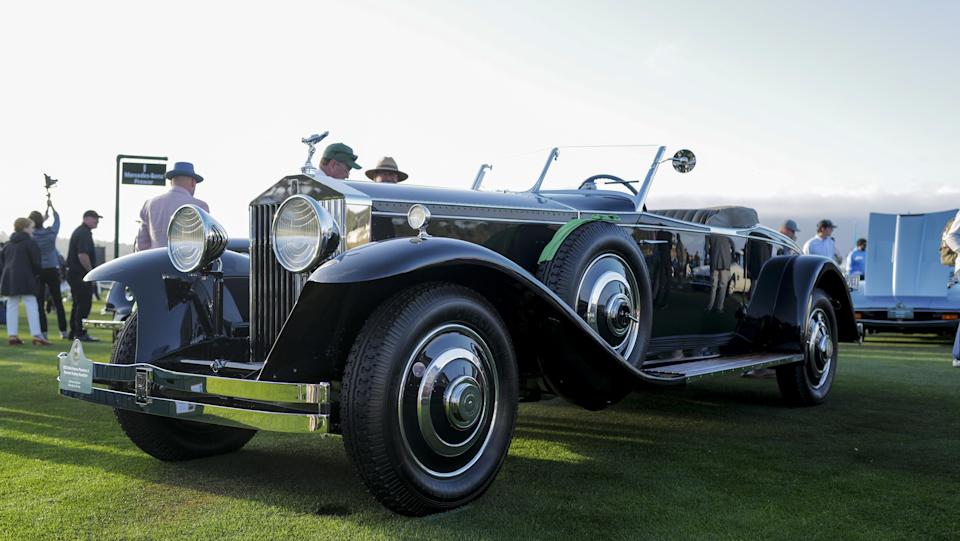
Although several Rolls-Royce Phantoms were competing as a celebration of the famed nameplate’s centenary, it was this Phantom II Brewster Henley Roadster that commanded our attention. According to auction house RM Sotheby’s, 125 Phantom II chassis made it to the U.S., but only eight were given Henley Roadster bodywork by stateside-based Brewster & Company.
An RM Sotheby’s lot description of the model, from one of the cars sold in 2013, notes: “This design was distinguished by a beltline that dipped jauntily at the center of the doors, a sporty split windshield, and a long tail with a rumble seat, which had its own door. It was sporty, well-proportioned, and pricey.”
The one featured this year at Pebble is part of Sam Lehrman’s collection in Palm Beach, Fla. “I was parked on a show field in 2016, and the car that I had was directly in front of this car,” says Lehrman. This car caught my attention, and I started walking around it , and the more I looked at it, the more I realized it was a very, very special car. I pursued it, and I was fortunate enough to acquire it, and I’m very proud to be able to show it today.”
1955 Mercedes-Benz 300 SL “Gullwing”
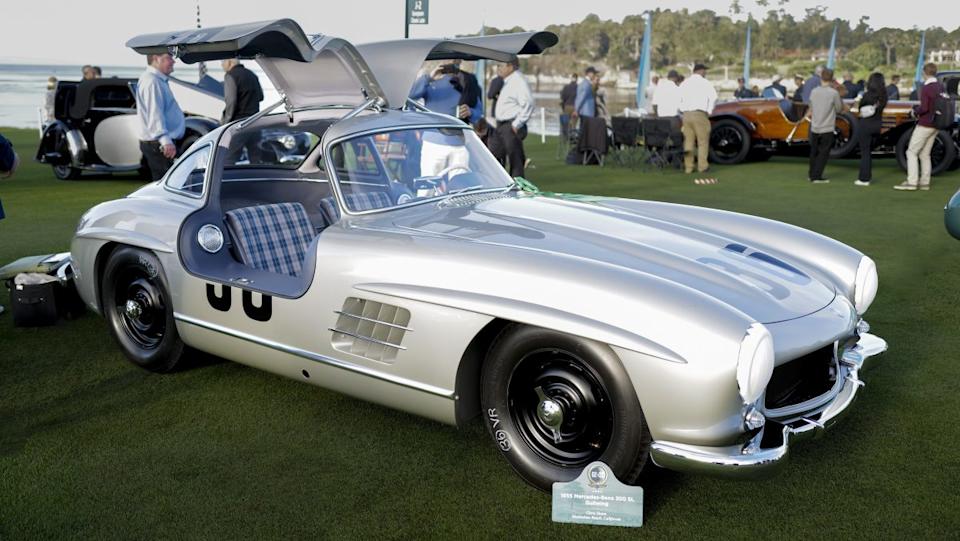
The Mercedes-Benz 300 SL “Gullwing” model, internally designated as the 198 series, debuted at New York’s International Motor Sports Show in 1954 and was built through 1957. Already a blue-chip collectible, that era’s SL was represented spectacularly by this steel-bodied example owned by Chris Shane of Manhattan Beach, Calif.
“This car was raced by Olle Persson, a Swedish driver, in the 1955 Swedish Grand Prix. This was the same event where Stirling Moss and Juan Fangio were driving open 300 SLRs, and also where the Uhlenhaut Coupe was being tested,” says Drew Grundfor of California-based restoration specialist Scott Grundfor Company, the team that brought it to concours-quality condition. This 300 SL ended up finishing third in its class that day.
“They actually had to the lighten the car because, in practice runs, they weren’t catching up to the 550 Spiders, so they pulled the grille out . . . anything heavy that they could remove, they took it off,” says Grundfor. “It’s very rare to see a factory supported and factory procured race car in private hands. I helped [Chris Shane] find this car in Germany and it’s been a real labor of love for the last two-and-a-half years.”
1967 Bizzarrini 5300 GT Strada Berlinetta
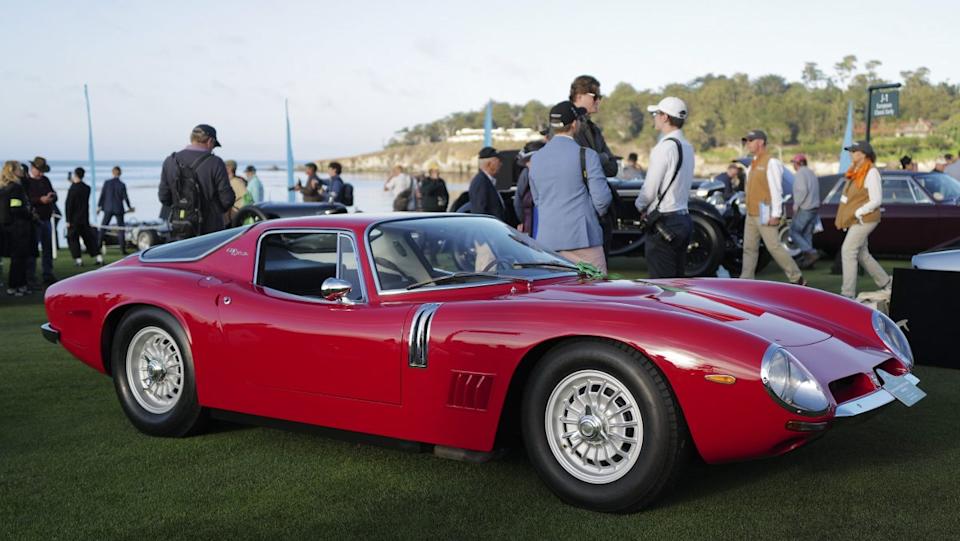
One of the most beautiful cars in the world, at least in or opinion, the Bizzarrini 5300 GT Strada was a model created by Giotto Bizzarrini after his exodus from Ferrari as part of the Prancing Horse’s renowned “Palace Revolt” that saw several key personnel leave. Bizzarrini went on to refine his talents on automotive projects for Count Giovanni Volpi and, eventually, Iso Autoveicoli S.p.A. After a falling out with the latter’s founder, Bizzarrini formed his short-lived namesake marque and partnered with now-legendary designer Giorgetto Giugiaro.
The result of this collaboration was the 5300 GT, developed from the work Bizzarrini had done on the A3C for Iso. A total of 133 were built in Strada, America, and Corsa configurations. In 1965, an example of the Corsa claimed its class at the 24 Hours of Le Mans with an average speed reported to be more than 105 mph. Yet it was this street-focused Strada version, owned by Tom and Gwen Price of Belvedere, Calif., and competing in the Postwar Sports Touring class, that won us over at Pebble.
2024 BMW Art Car
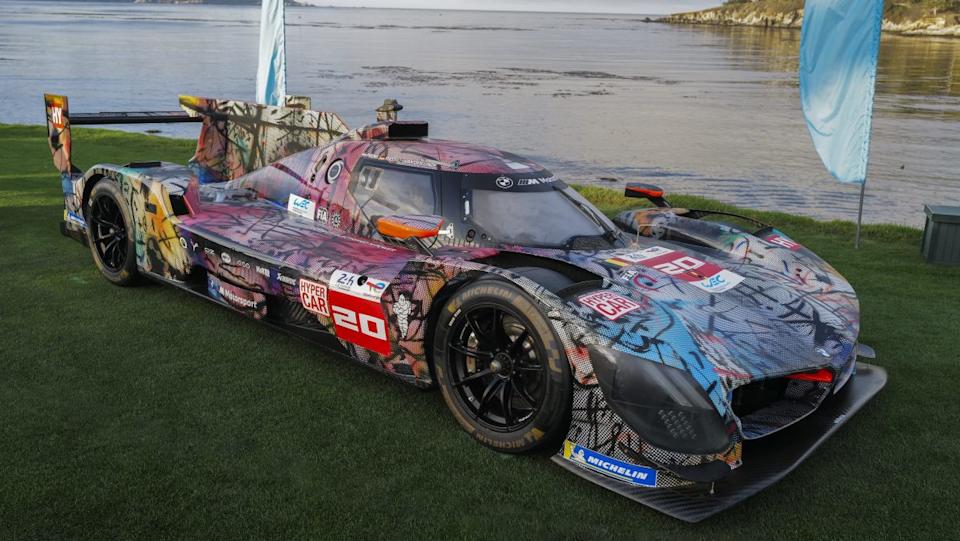
According to Tom Plucinsky, head of BMW Group Classic USA, BMW’s now famed “Art Car” concept began “organically” in 1975, when an art auctioneer and racer had his Le Mans entry painted by friend Alexander Calder. As Plucinsky notes, race cars at the time were campaigned in the respective colors representing their country, such as red for Italy, green for Britain, and blue for France, so to have “these bright primary colors was jarring, and something different,” he says. It was decided that such statement pieces would continue, with subsequent artists including Frank Stella, Roy Lichtenstein, and Andy Warhol, among others.
Set alongside Warhol’s car on the field was Art Car No. 20, a 2024 BMW Hypercar that competed and finished that year’s 24 Hours of Le Mans. Unlike Warhol’s version, which required 13 pounds of paint, this hybrid features a foil wrap showcasing the artistry of Julie Mehretu. Plucinsky points out that the “alienated faces, graffiti, and pixelation” are inspired from Mehretu envisioning what the car would look like if it were driven through her 10-foot x 10-foot painting Everywhen.
1965 Bugatti Type 101C-X Roadster
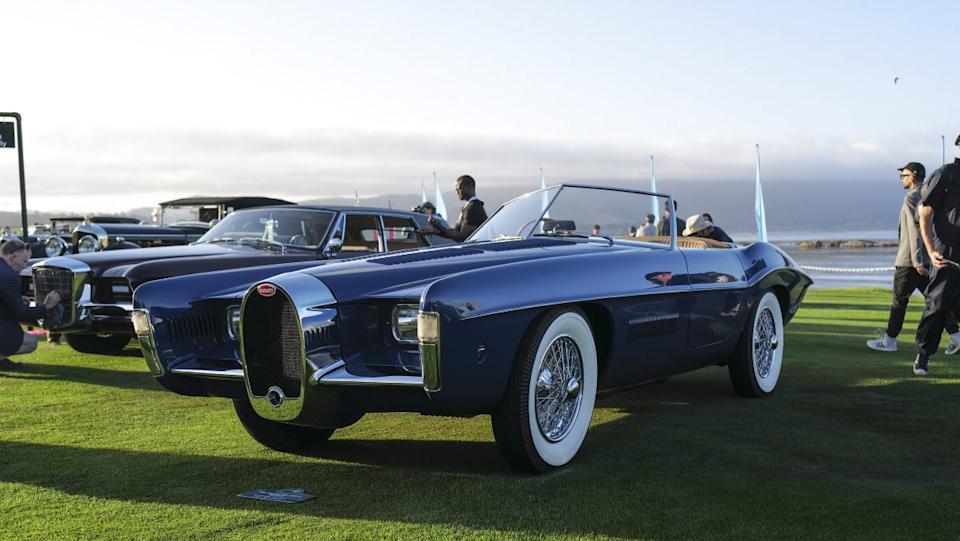
Bugatti struggled to survive following the death of Ettore Bugatti in 1947. The Type 101, first shown at the Paris Auto Salon in 1951, was intended to lift the brand, but just seven Type 101 chassis were built. One chassis wasn’t bodied and finished until 1965 after earlier being discovered in a barn. That car, which wowed those on the lawn at Pebble this year, is a one-of-a-kind Bugatti that looks less like a Bugatti than a muscle car.
The finished car was shown for the first time at the Turin Auto Salon in 1965, and was part of the collection of Virgil Exner, an American car designer who is best known for his work with Chrsyler. This 1965 Bugatti Type 101C won the Elegance in Motion trophy at the Concours.
1951 Ferrari 340 America Touring Barchetta
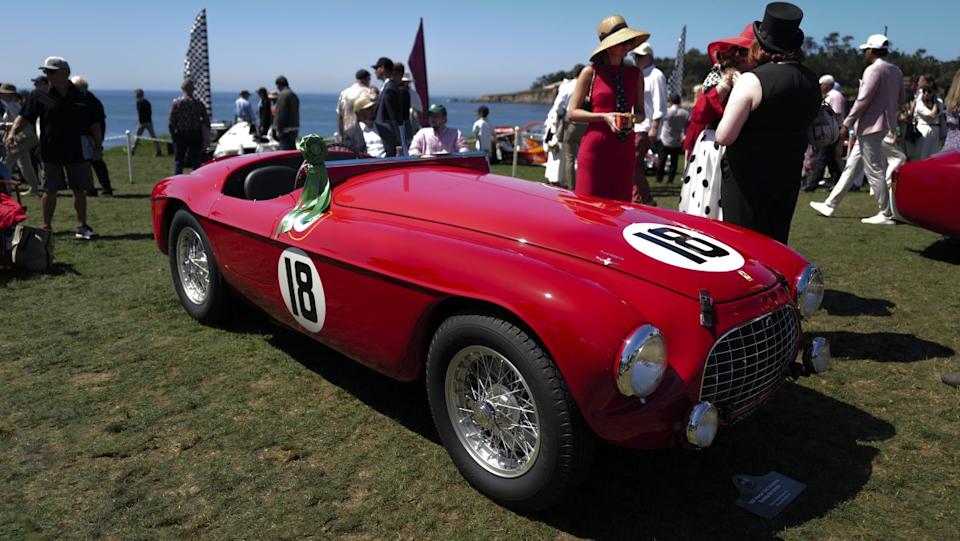
The 1951 Ferrari 340 America Touring Barchetta is powered by a 4.1-liter V-12 engine making 217 hp to create a car that Autosport said at the time was the “fastest sports car ever placed on the world’s markets.” The car was Enzo Ferrari’s play for the American market, a fast grand tourer that could beat anyone else.
Ferrari kept making the America until 1967, though just 25 of the 340 America were produced from 1950 until 1952. This example is one of only six that had coachwork by Touring Barchetta, and was purchased by Edward Ramsden Hall, who finished the 1950 24 Hours of Le Mans all by himself, the only driver to ever do so. This 340 America competed in the 1951 24 Hours of Le Mans, in addition to later events at Sebring and Daytona.
This 340 America is currently owned by Nikolay Miroshnichenko of Almaty, Kazakhstan, who “commissioned a forensic restoration in 2023 to correct all modifications and return the car to its 1951 Le Mans livery and configuration,” according to the Pebble Beach guide. In person, it is simply stunning.
1930 Cadillac 452 Murphy Convertible Sedan
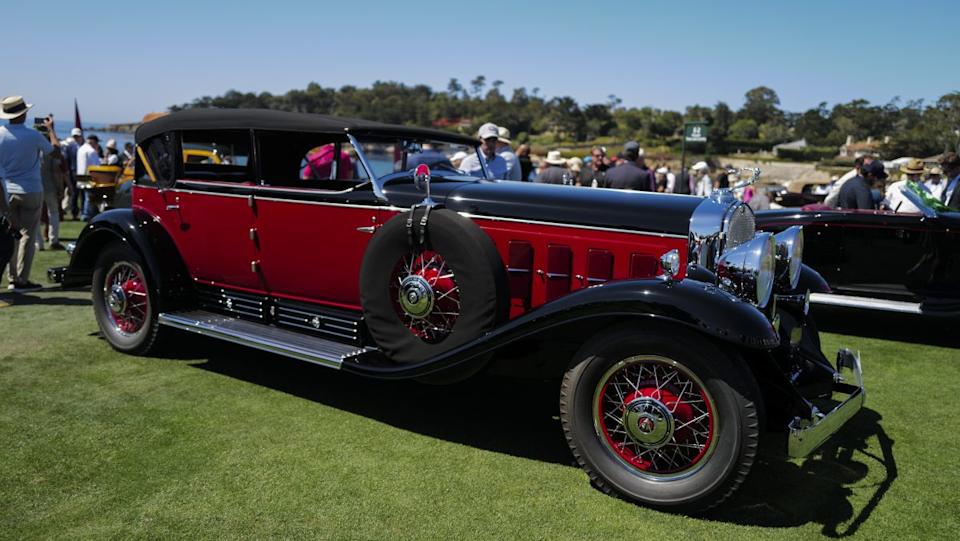
It was the Cadillac V-16 engine, unveiled in New York in 1930 and the first American V-16, that made Cadillac famous, a culmination of the cylinder wars which saw automakers in Europe and the U.S. compete to out-cylinder each other. That competition was largely scuttled by the Great Depression, but the Cadillac V-16 still exists as a monument to pure ambition.
This 452 Murphy Convertible Sedan was one of the first with Cadillac’s V-16, and was originally owned by Charles S. Howard Jr., whose father, Charles S. Howard, was a wealthy car dealer and racehorse breeder and the owner of Seabiscuit. The 452 Murphy Convertible Sedan was restored in the mid-1990s and shown at Pebble Beach for the first time in 1997. In person, the car has a presence, and is an embodiment of a time just after the stock market crash in 1929 when it was thought, or at least hoped, that it was a mere correction.
1930 Invicta 4 1/2 Liter S Type Vanden Plas Sports Tourer
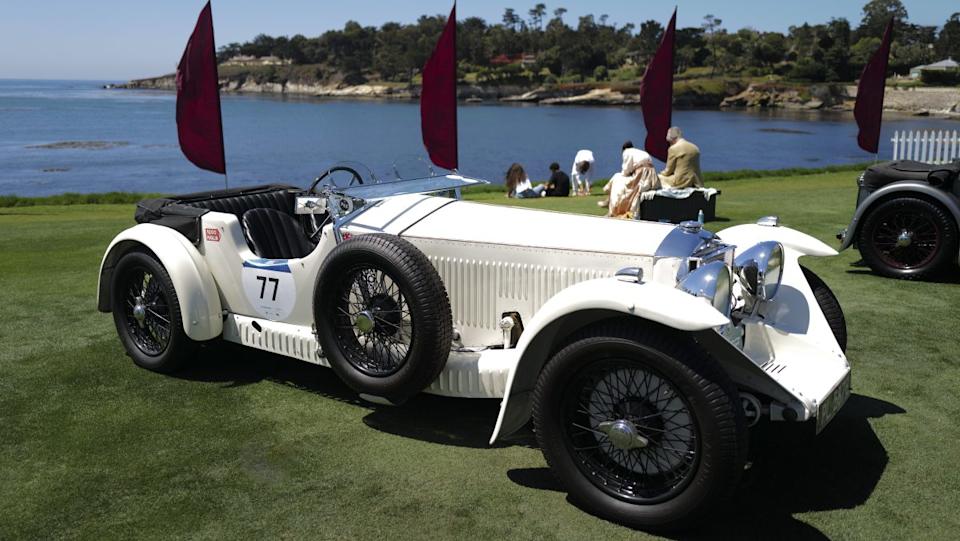
Invicta was a British automaker known for its light but punchy cars, first built in 1925 and continued, originally, until 1935, when it fell victim to the Great Depression. The S Type is considered its finest creation, and this example was produced in 1930, the year the car debuted at the London Motor Show.
The S Type was powered by a 4 1/2-liter, six-cylinder engine, and only 77 S Types were made. The S Type was known for its “low chassis,” which made it quicker for on-road racing and improved handling. This Invicta was raced in 1931 and 1932, and owned then by the India Tyre Company. It was restored in 2007, and appeared at Pebble Beach this year as part of a celebration of Invicta for its 100th anniversary.
In person, it represents simplicity in motion.
1927 Delage Type 15 S8 Grand Prix
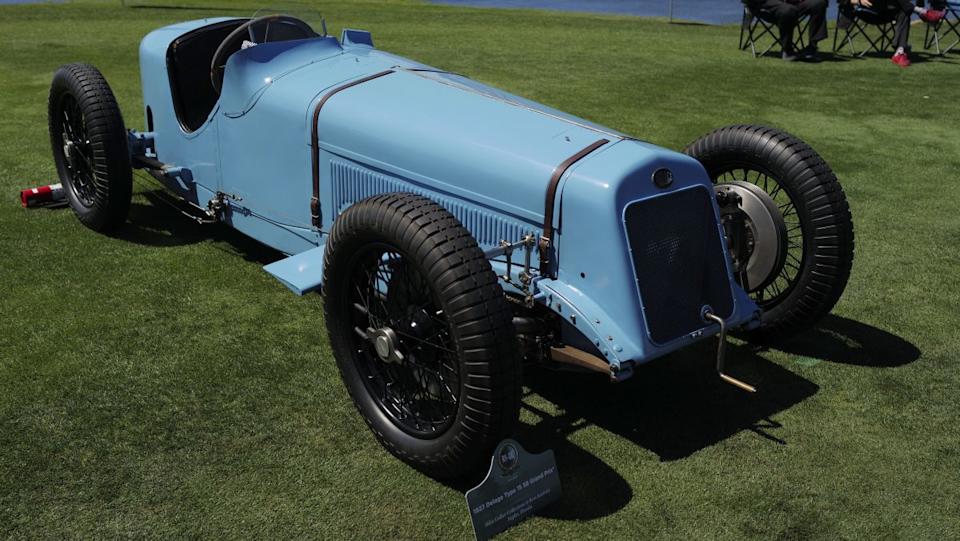
Powered by high-revving V-8, the 1926 Delage race car was based on a previous design powered by a 2.0-liter V-12. The cars were masterminded by Louis Delage, a French engineer who opened his own company making cars in 1905 and spent the next several years racing.
In 1926, Delage started strong, winning its first race, “but the exhaust with twin superchargers overheated the driver and was highly unpopular,” according to the Pebble Beach guide. “In 1927, major modifications ensued, including a front-mounted blower. As a result, Delage won easy victories at almost all of the Grand [sic] Prix, driven by Robert Benoist. Satisfied, Louis Delage summarily closed the race department and sold all the cars.”
This example took 7th at the Indy 500 in 1929, and is the only original example known to still exist.
Best of Show: 1924 Hispano-Suiza H6C Nieuport-Astra Torpedo
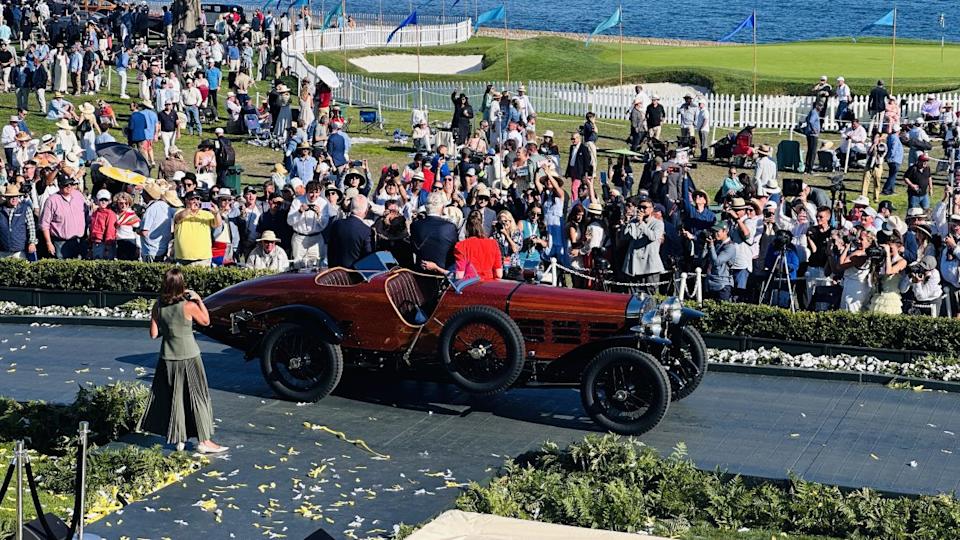
This stunning and unique automobile, nicknamed the “Tulipwood” Torpedo, sank all competition when named Best of Show this year. The car, owned by Penny and Lee Anderson of Naples, Fla., was previously part of Monterey Car Week in 2022, when it crossed the auction block through RM Sotheby’s for $9.245 million.
The Hispano-Suiza H6C that took top honors at Pebble was originally owned by André Dubonnet, an aviator and racer who had the body built by aeronautic outfit Nieuport-Astra. Rather than tulipwood, though, the vehicle is actually made from “1/8-inch-thick strips of mahogany . . . all secured by many thousands of aluminum rivets and varnished,” according to the auction house’s lot description at the time. Dubonnet raced the car in the 1924 Targa Florio, where he finished sixth, and then took fifth in that same year’s Coppa Florio.
As for the 229 cars in competition at the 2025 Pebble Beach Concours d’Elegance, the final four also comprised a 1939 Maybach SW38 Spohn Sport Zweisitzer, a 1933 Invicta 4½ Litre S Type Corsica Drophead Coupé, and a 1956 Maserati 200SI Fantuzzi Open Sports Racer. With this win, the “Tulipwood” Torpedo has had its already notable provenance given a boost nothing short of ballistic.
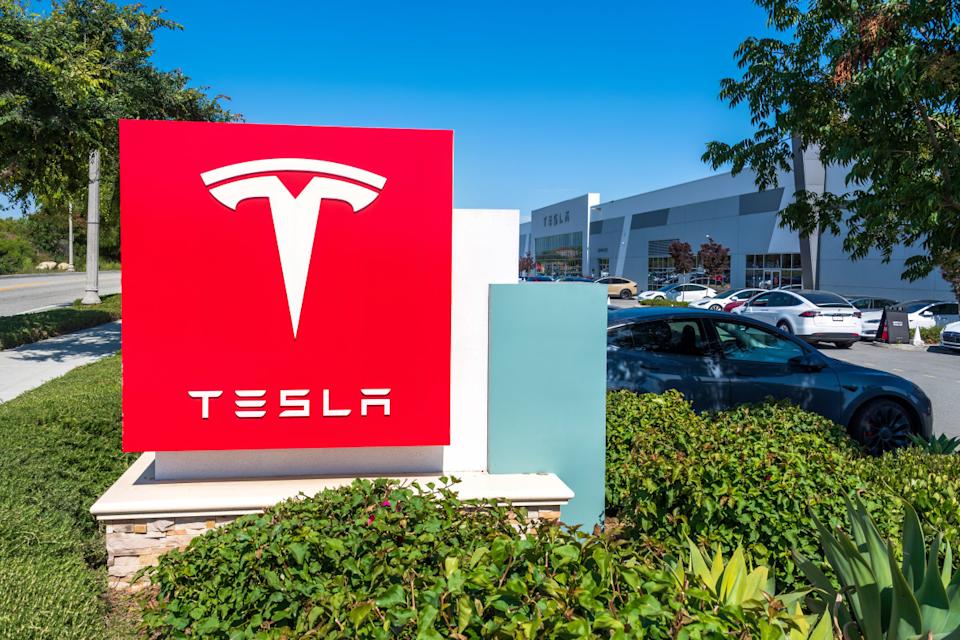
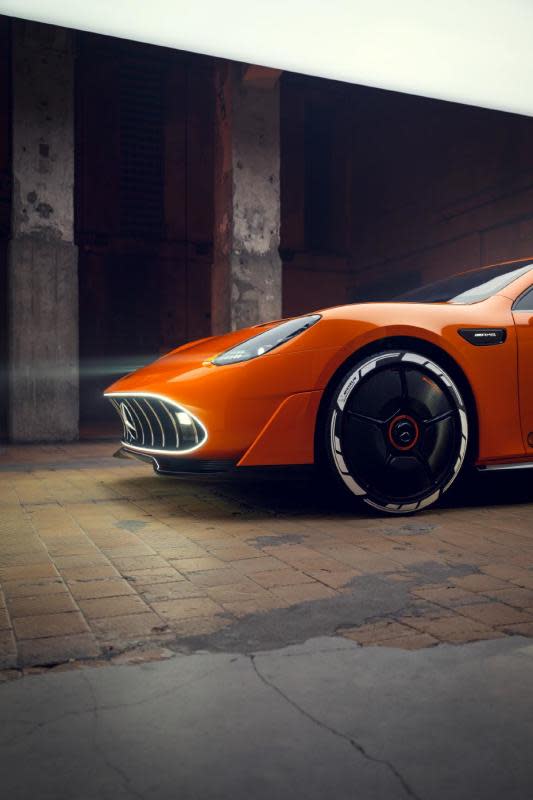

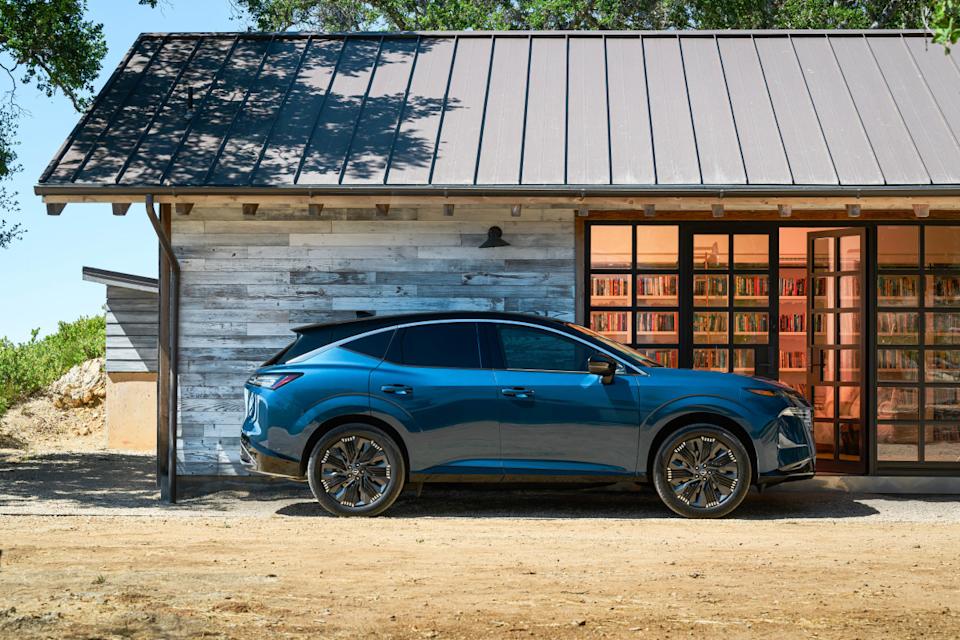
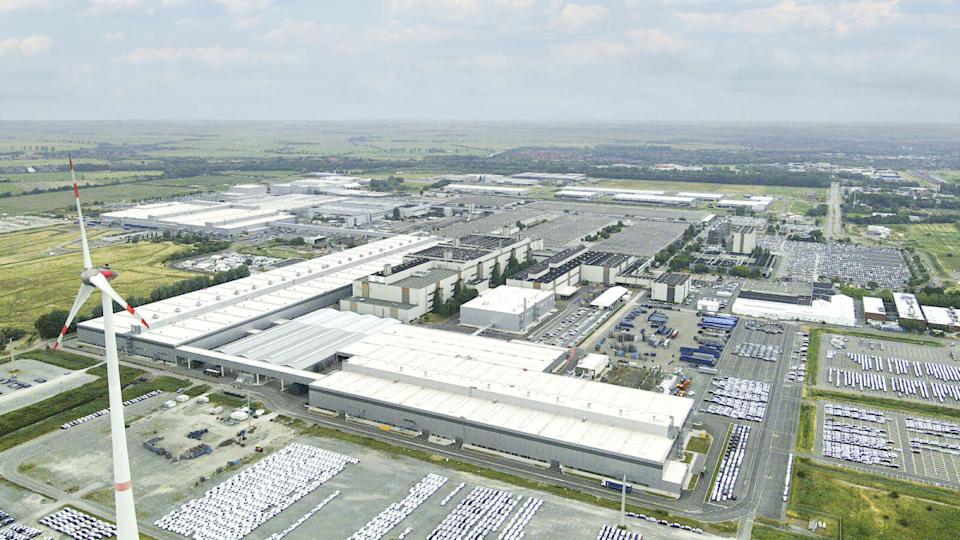
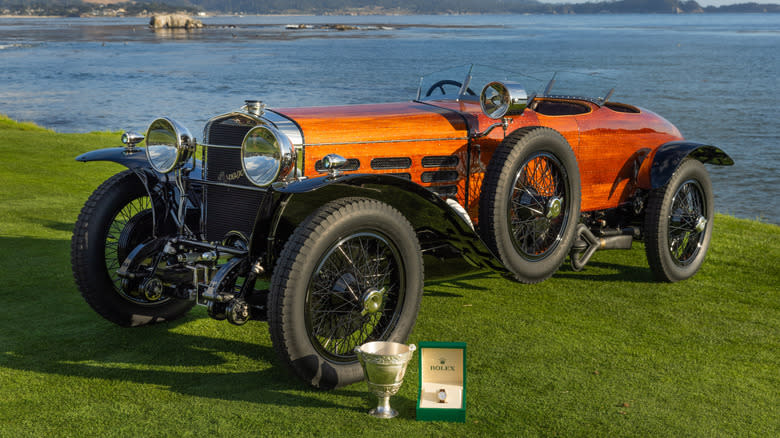

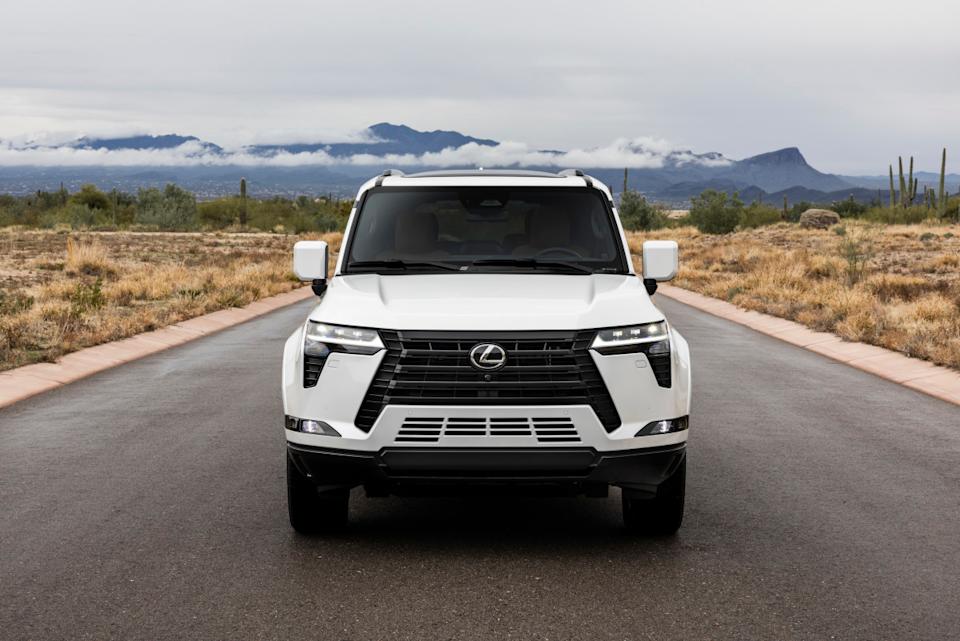
Comments